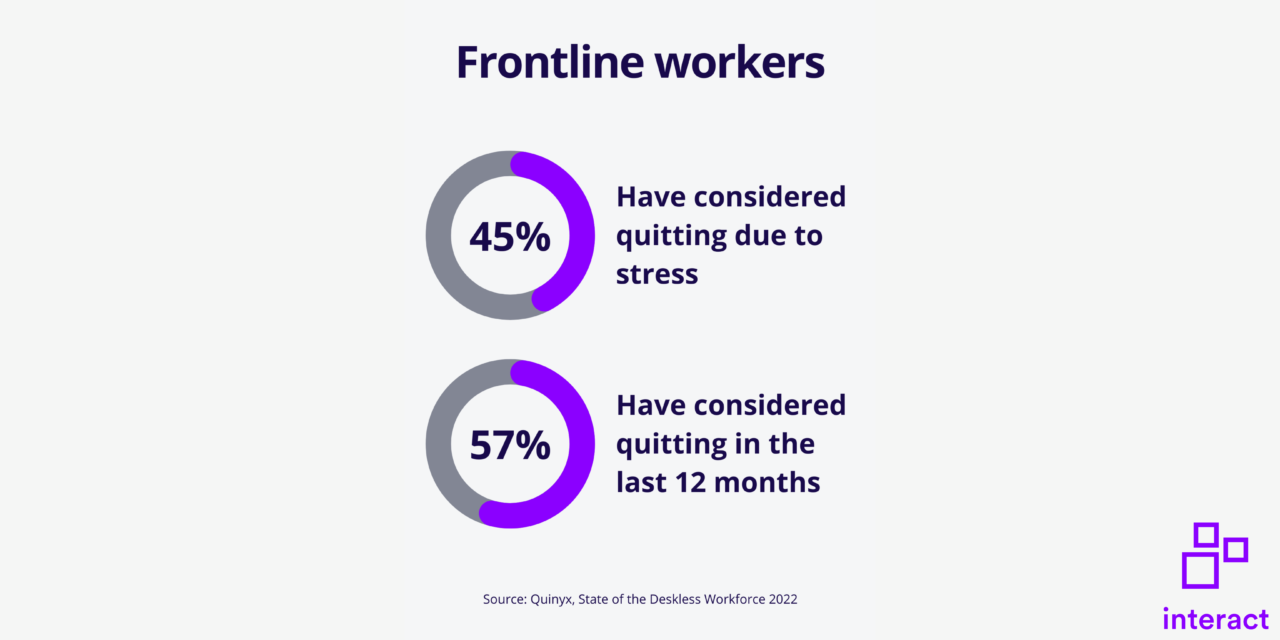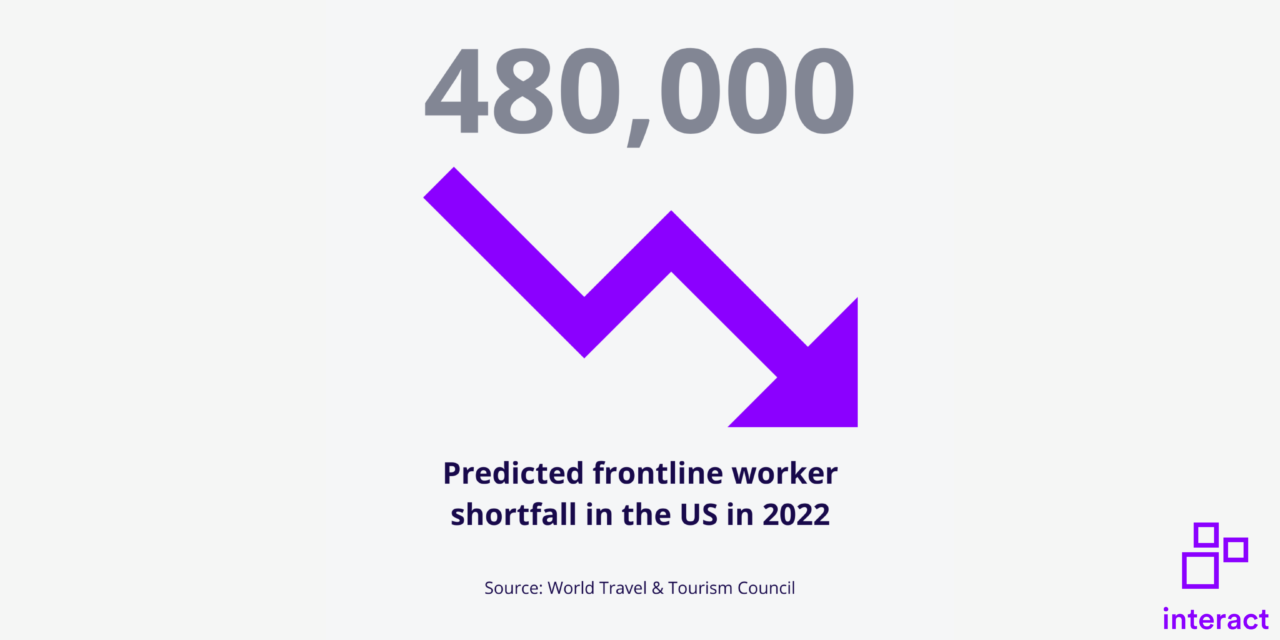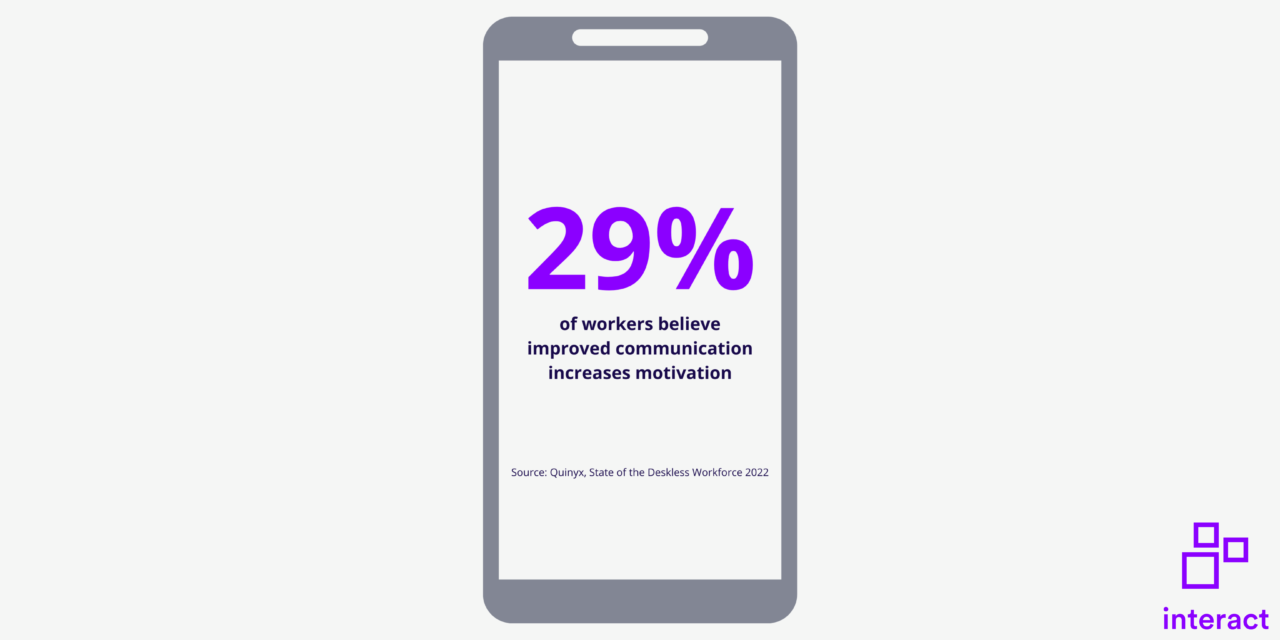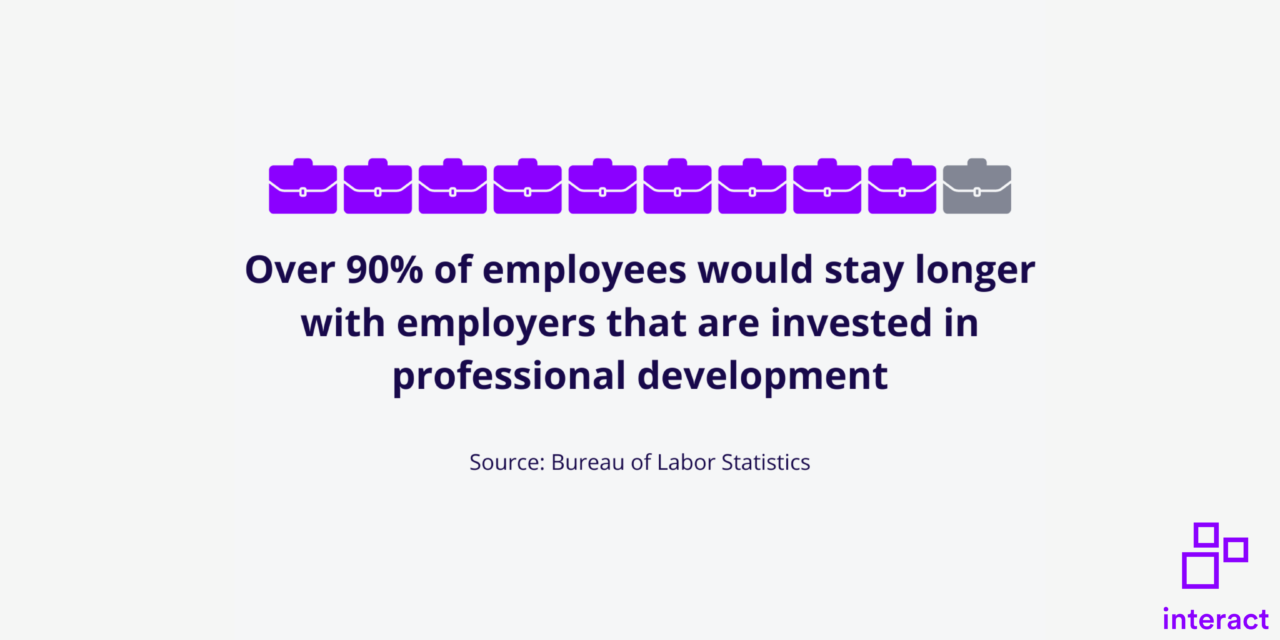The travel sector is facing significant challenges, and with a growing staffing gap, there has never been a better time to ensure frontline employee communications are providing your people with everything they need to thrive.
Frontline staff in the travel sector aren’t having the easiest time. In pressurized situations for both customers and travel organizations, those frontline staff are bearing the brunt of customer frustrations and are often tasked with dealing with complex situations. One recent survey finds more than half of frontline staff have considered quitting their job in the past year and, according to the same study, 45% have considered leaving due to stress.

High stress levels within the sector have manifested into a mass exodus of workers, resulting in severe staffing issues. In late 2021 the World Travel & Tourism Council estimated that through 2022, the sector will encounter an average shortfall of 480,000 workers in the US alone.
Workers who are staying put are short of the levels of support they’re used to, and with the sector in disarray, attracting first jobbers and people from other industries isn’t proving to be easy.
Wherever they can, travel organizations are taking all the necessary steps to support their people through this difficult period. One way that they can help to ease the burden on customer-facing staff is through effective frontline employee communications.
Why frontline employee communications matter

Great communication can help to solve issues faster, improve collaboration between teams to find those solutions quickly, and ultimately improve the quality of service and customer experience when competitiveness matters more than ever.
All of this can also improve the employee experience (EX), helping frontline staff to find fulfillment in their day-to-day roles and take pride in working for their employer. In turn, this helps to reduce attrition and rebuild a positive company culture. Travel organizations don’t just have an opportunity to retain customer-facing workers while resignations are up through improved frontline employee communication – they also have the opportunity to help improve their performance.
3 essential frontline employee communication hacks
Frontline employee communications can be transformative for organizations when executed correctly. Here are three areas where travel enterprises should consider concentrating their comms efforts when it comes to connecting with and engaging their frontline workers.
1. Prioritize recognition
Recognition is a great motivator, and wherever possible employees should receive recognition to keep them feeling valued. Yet even before the pandemic, frontline workers were ranked among the least motivated category of worker.
Employers that don’t take action to motivate, engage, and ease the burden placed on the front line through today’s challenges risk leaving those individuals feeling abandoned, disillusioned, and likely to join their ex-colleagues in seeking other opportunities elsewhere.
The essential internal communications guide
Yet employers can’t provide recognition if they’re unaware of the great work that individuals are doing. Having a digital home for the organization, which employees at all levels can access, can be a great platform for shouting about individual achievements and formally recognizing them.
For example, intranet software with inbuilt social features and peer-to-peer recognition tools enables exposure, acknowledgment, and appreciation for commendable work by frontline workers. By enabling frontline workers to simply post a blog or an update about a situation they’re proud of or an achievement they think will inspire others, those at senior levels get clear insights into what’s being done well and can recognize and reward this behavior in front of the rest of the workforce. Peer-to-peer recognition also allows co-workers to call out great work on the platform, where it can be seen by senior staff.
2. Diversify the flow of information and communications
Organizations that don’t communicate effectively with frontline staff risk leaving them feeling isolated and disconnected from the wider business. Seamless frontline employee communication and access to up-to-date information not only promote feelings of inclusion, they are essential to helping frontline employees provide the best possible service levels. What’s more, 29% of workers believe that improved communication between management and employees would increase their motivation.

Having a central point of information that employees can access securely from anywhere is an important step to take for organizations with frontline staff. Yet employers can improve the flow of information and frontline employee communications further when the central point of information can also be used to broadcast comms to dispersed staff through multiple channels.
Introducing different methods of communication that better suit your mobile staff is the best way to ensure that they are kept in the loop, no matter where they’re located. This is evident in intranet software that features personalized homepages that provide different employee groups with the information that is relevant to them, as well as broadcasting features that allow important information to be sent and tracked through a variety of channels.
From crisis comms to policy updates and other essential information, organizations can reach frontline employees via SMS, frontline employee communication app notifications, digital signage, and intranet homepage feeds, as well as traditional channels such as email. This ensures important frontline communications don’t get missed, and the use of Mandatory Read functionality certifies which employees have engaged with the communication and who needs to be prompted to read it.
The essential internal communications guide
Organizations also need to consider how frontline employees can find the right information easily. Self-service has become an important factor in the digital employee experience and having powerful search capabilities through your intranet can help employees find exactly what they need quickly, without seeking assistance. Interact’s intranet software features a Google-style search bar that stays firmly in place at the top of every page. The search functionality trawls through all of your integrated document storage systems such as SharePoint, Dropbox, as well as the intranet itself, and can be a powerful ally when the pressure is on to quickly respond to situations as they evolve.
3. Boost engagement in training and upskilling
When an organization experiences a low frontline employee headcount, training and upskilling become increasingly important. New recruits may need to be trained up quickly so they can hit the ground running, while upskilling existing employees can help to fill vacant frontline positions, or take on responsibilities of colleagues who are exiting the business. In turn, communicating development opportunities may also persuade frontline employees to stay, with LinkedIn’s Workforce Learning Report finding 94% of employees would stay longer with employers that are invested in helping them to learn.

Engaging offline employees can be a challenge when it comes to learning and development (L&D), and to fit around the demanding nature of frontline roles, training and development initiatives must become as mobile and flexible as the frontline workforce.
Virtual programs enable a flexible approach to development, and by taking a multichannel approach to frontline employee communications, organizations can reach frontline workers with L&D prompts and promotion. For example, digital signage comms can provide QR codes that employees can scan to directly access learning content on the intranet.
Intranet forums are also a great way to connect frontline employees who are undergoing the same training and development, and this helps to nurture a thriving support network that encourages and aids successful development.
For busy frontline staff, microlearning is an effective development method, and this can be supported with an intranet that makes it easy to embed, share, and find engaging video content.
Travel organizations that place an emphasis on upskilling frontline workers will not only find it easier to fill growing skills gaps – they will also find it easier to attract new people through the professional development opportunities on offer.
A direct line to the frontline
Expectations for exceptional service are high in the travel industry, and as the face of your organization, frontline workers shoulder a lot of responsibility to deliver on those expectations.
Carefully considered frontline employee communications and a comprehensive employee portal ensure they have the support they need, and providing them with fast access to critical information can keep them inspired, engaged, and loyal to your organization.
In turn, this can do wonders for your brand reputation which is especially important at a time when the struggles the sector faces are widely understood by consumers. This is where happy, well-informed staff can make all the difference.


